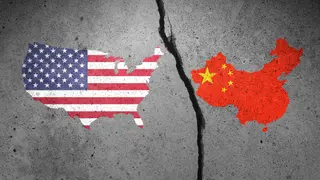
作者/Author(s): Gerard DiPippo and Benjamin Lenain
網站來源/Source: RAND Corporation
日期/Date: 06/10/2025
關鍵字/Keywords: 經濟、貿易戰、中國
摘要:
美中雙方貿易戰已逐步降溫,雙方撤回部分報復性措施,避免貿易關係全面破裂。但是北京也可藉此次貿易戰檢視自身經濟韌性與美方弱點,在脆弱的停火時期為未來預作準備。
關鍵教訓
- 在經濟邊緣政策中,政治是否能承受經濟痛苦,比痛苦本身更為關鍵。中國認為,他們以長期抗爭為前提、預期華府終將尋求停戰的報復性策略初獲成效,也預計在未來再度使用這種模式。
- 雖然貿易禁運對北京造成損害,但其藉由調整出口方向、減少對美依賴的方式來分散風險,從而降低對國內經濟的衝擊。
- 美國的貿易政策為北京的技術工業和自給自足政策提供了適當的理由。無論貿易戰結果為何,中國都將持續推動此一政策。儘管中國國內市場疲弱,但在製造與出口方面仍佔有優勢。
了解中國的自給自足政策
- 中國領導人認為,美方的科技與經濟圍堵是出於政治動機,而非純粹經濟考量。
- 在經濟層面上,貿易戰涉及整體貿易流量,可能加劇雙方原有的結構性問題。
- 北京的目標是提高自給自足,但內部的弱點使其更加依賴出口。
- 由於美國高度依賴許多中國製造的重要產品,因此成為中國推動出口武器化的基礎。相較之下,美方僅在液化丙烷氣出口方面具有優勢。
- 北京草擬的報復性關稅豁免清單顯示,在美國對中進口品中約有三成為中國較為脆弱的項目。
- 中國是全球製造業產值最高的經濟體,主要是供應國內市場。消費性電子產品製造商最依賴出口,但對美出口僅佔 4.5%。其他規模較小的產業,如玩具和運動用品、傢俱等更依賴美國市場。
- 整體而言,中國整體經濟對美國最終需求較大,主因服務業與附加價值嵌入對美出口而偏高;而美方對中貿易風險則集中於製造業,而非服務業。
- 目前的美國關稅尚不足以危及中國整體出口的附加價值收益,但若美方對中國企業移轉生產基地的第三國也加徵關稅,則可能產生更大衝擊,導致中國製造業失業率上升。
Summary:
The U.S. and China toned down their trade war and reversed some retaliatory measures to prevent a breakdown in trade. Both sides secured near-term concessions to de-escalate tension. Beijing could assess its economic resilience and the U.S.'s vulnerabilities from this trade war to prepare itself against the fragile truce.
Key Lessons
Key Lessons
- Political willingness to endure economic pain is more significant than the pain in economic brinkmanship. China believes its retaliation strategy of preparing its population for long-term struggle and anticipating Washington's pursuit of a truce was fruitful and will use it again.
- Trade embargoes are damaging for Beijing. However, Beijing addressed its vulnerabilities by redirecting its exports and reducing its dependence on the U.S., reducing the shock to its domestic economy.
- U.S. trade policies justified Beijing's techno-industrial and self-reliance policies. Regardless of the outcome, China must continue its approach. Although China's domestic market is weak, it has a manufacturing and export dominance.
Understanding China's Self-Reliance Policies
- Chinese leaders believe the U.S. technological and economic containment was politically motivated rather than economic.
- Economically, the trade war involves overall trade flow and may exacerbate antecedent problems for both countries.
- Beijing aimed to increase its self-sufficiency, but its internal weaknesses caused it to be more dependent on exports.
- China could weaponize its exports since the U.S. depends on many critical products from China. In contrast, the U.S. only had an advantage in exports of liquified propane gas.
- Beijing's draft retaliatory tariff exemption list suggests it is vulnerable in around 30% of U.S. imports.
- China produced more manufactured goods than any other economy, primarily for its domestic market. Consumer electronic manufacturers are the most dependent on exports, but exports to the U.S. account for only 4.5%. Other smaller industries, such as toys and sporting goods, and furniture, relied more on the U.S. market.
- China's overall economic exposure to U.S. final demand is larger due to services and value-added incorporated into U.S.-bound exports. At the same time, the U.S. is more exposed to manufactured goods than services.
- Current U.S. tariffs will not endanger China's entire exported value-added service revenues. However, if the U.S. imposes tariffs on intermediary countries where Chinese firms offshored production, it may have a larger impact, causing higher unemployment in its manufacturing industry.
